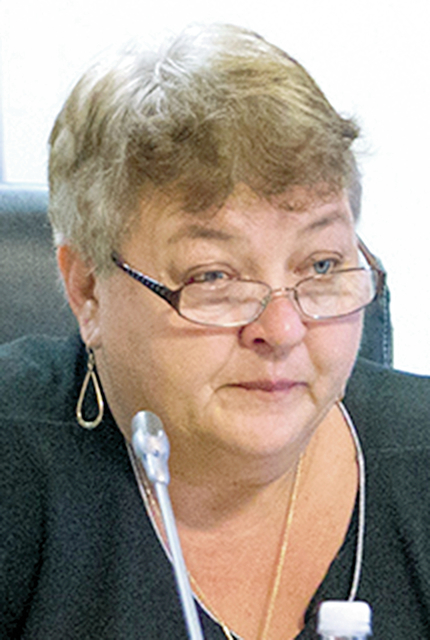A Native Hawaiian educator said Mauna Kea is the realm of akua, or gods, while testifying against the proposed Thirty Meter Telescope on Monday. ADVERTISING A Native Hawaiian educator said Mauna Kea is the realm of akua, or gods, while
A Native Hawaiian educator said Mauna Kea is the realm of akua, or gods, while testifying against the proposed Thirty Meter Telescope on Monday.
Ku Kahakalau presented her testimony as the first witness for opponents of the $1.4 billion project.
The quasi-judicial hearing, a redo of a previous contested case, started taking witness testimony in October. So far, both the University of Hawaii at Hilo, the applicant for the project’s conservation district use permit, and TMT International Observatory have completed their witness testimony.
About 20 witnesses have been called in the lengthy hearing, scheduled through the rest of the month.
Some Hawaiians oppose the project because they see Mauna Kea as sacred, a view Kahakalau endorsed.
“It clearly is a place that is reserved for the akua,” she said. “My family has never been on the summit because it is too sacred.”
Kahakalau founded one of the first Hawaiian charter schools, Kanu O ka Aina, in Waimea.
TIO is contributing $1 million a year to Hawaii Island educational programs through its THINK fund at the Hawaii Community Foundation and Pauahi Foundation.
Kahakalau said she doesn’t see that as worth the cost.
“When it comes to taking care of the environment, that is nonnegotiable,” she said, emphasizing Hawaiians’ connection to the land.
Some of the observatory’s grants have supported Hawaiian educational programs, including a preschool program at the Kanu o Ka Aina campus that is operated by another organization.
Katie Benioni, financial officer for the Kanu o ka Aina Learning Ohana, said the nonprofit received $20,000 for its Malamapokii outdoor STEM learning laboratory. She said the organization shares the same campus with the school but is managed separately.
If built on Mauna Kea, the observatory would be 180 feet tall and sit on the mountain’s northern plateau at 13,100 feet above sea level.
An earlier contested case for the land use permit was held in 2011.
In December 2015, the state Supreme Court ruled the state Board of Land and Natural Resources violated due process rights of project opponents by voting for the permit before the previous review was held, requiring a second hearing.
The TIO board has selected the Canary Islands as an alternate site to Mauna Kea because of lengthy delays caused by the court ruling and protests that blocked construction in 2015.
Observatory officials say they intend to resume construction in April 2018 at either site.
The telescope organization’s partners are Caltech, University of California, Association of Canadian Universities for Research in Astronomy and national institutes in Japan, China and India.
Email Tom Callis at tcallis@hawaiitribune-herald.com.



